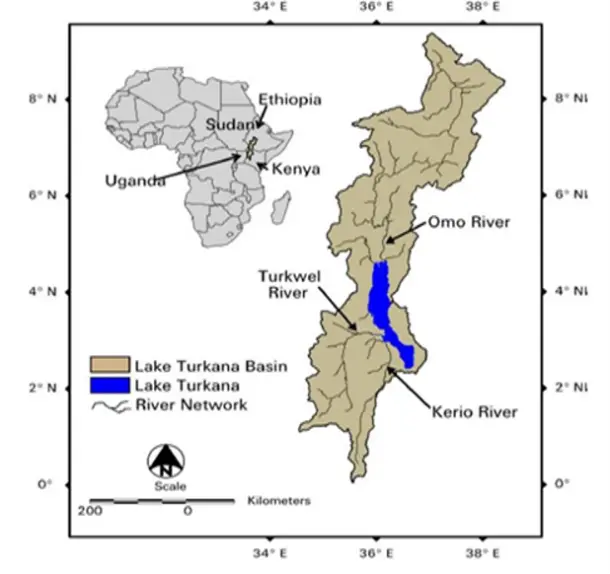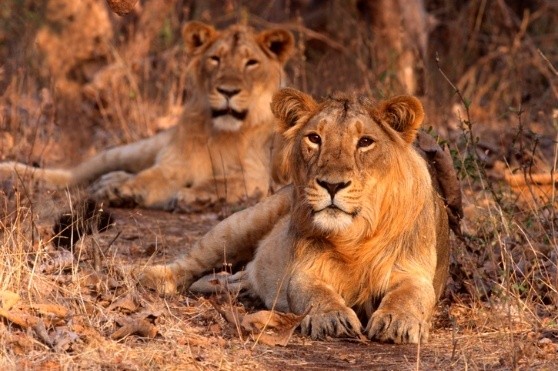- Courses
- GS Full Course 1 Year
- GS Full Course 2 Year
- GS Full Course 3 Year
- GS Full Course Till Selection
- Online Program
- GS Recorded Course
- NCERT (Recorded 500+ Hours)
- Polity Recorded Course
- Geography Recorded Course
- Economy Recorded Course
- AMAC Recorded Course
- Modern India, Post Independence & World History
- Environment Recoded Course
- Governance Recoded Course
- Science & Tech. Recoded Course
- International Relations and Internal Security Recorded Course
- Disaster Management Module Course
- Ethics Recoded Course
- Essay Recoded Course
- Current Affairs Recoded Course
- CSAT
- 5 LAYERED ARJUNA Mentorship
- Public Administration Optional
- ABOUT US
- OUR TOPPERS
- TEST SERIES
- FREE STUDY MATERIAL
- VIDEOS
- CONTACT US
Lake Turkana: First Comprehensive Survey in 50 Years
Lake Turkana: First Comprehensive Survey in 50 Years
10-08-2024

The initial findings from the 10-year research project led by UNESCO and WFP, funded by the Dutch Government, reveal high fish potential in Lake Turkana.
- Lake Turkana is Africa’s fourth-largest lake and the largest permanent desert lake in the world. It is a UNESCO World Heritage site, known for its unique biodiversity and cultural significance.
- The lake provides resources for communities on the lakeshore and surrounding areas, with an estimated population of 1 million people dependent on pastoralism, fishing, and to a lesser extent, crop farming.
Challenges:
- The semi-saline waters of Lake Turkana, driven by high evaporation rates and fluctuating lake levels (up to 8 meters per decade), have historically hindered sustainable development.
- Previous attempts to commercialize the fishery have largely failed due to a lack of understanding of the lake’s volatile conditions.
Key Features of Lake Turkana:
- Size and Significance: Lake Turkana is Africa’s fourth-largest lake (approximately 7,500 km²) and the largest permanent desert and alkaline lake in the world.
- Water Source: The Omo River contributes over 90% of the lake's inflow. An influx of 19 km³/year is needed for balance, but the average rainfall over the lake is less than 200 mm/year.
- Biodiversity: The lake hosts 79 fish species, including 12 endemic species, and the largest population of Nile crocodiles.
- Historical Surveys: The last lake-wide acoustic survey was conducted by Hopson in 1974.
New Research Project:
- In November 2023, a new 10-year project funded by the Dutch Government and implemented by WFP and UNESCO, in collaboration with Turkana and Marsabit counties and the State Department of Blue Economy and Fisheries in Kenya started.
- The project aims to sustainably explore the economic potential of Lake Turkana, enhancing food security and economic well-being of vulnerable populations around the lake amidst climate change by adopting an integrated food systems approach.
Initial Findings:
- The project's first year focused on establishing a comprehensive baseline study of the fishery, including a catch reporting system involving local fishers.
- Two lake-wide acoustic surveys per year are planned to estimate current fish biomass. These are coordinated by UNESCO and implemented by a research team led by IHE-Delft, including KMFRI (Kenya Marine and Fisheries Research Institute) and Bergen and Wageningen Universities.
Preliminary Results:
- The first lake-wide survey took place over two weeks in May-June 2024.
- Preliminary findings indicate a high abundance of fish across Lake Turkana, with notable concentrations in specific regions.
- Results show a substantial presence of both large and small pelagic species, particularly in the central and northern sectors of the lake. Small pelagic species, which are abundant and productive but currently underutilized, are of particular interest.
Future Plans:
- Further investigations are planned, with lake-wide acoustic surveys to be repeated every six months for five years, with the next survey scheduled for November/December to examine seasonal changes.
- The major potential but also challenge is to develop an offshore fishery for the small, highly productive pelagic species. These small species, fished by light attraction during the night, are nutritious, affordable, and processed in an environmentally friendly way.
Challenges Ahead:
- The key challenge is to unlock the potential in such a remote and constantly changing environment.
Additional key point:
- UNESCO World Heritage: The Lake Turkana National Parks site was inscribed on the World Heritage List in 1997.
- Economic Potential: The multi-year investment aims to enhance food security and economic well-being of vulnerable populations around the lake by adopting an integrated food systems approach, improving availability and access to safe, nutritious foods, and promoting healthy diets.
Must Check: Best IAS Coaching In Delhi
UPSC Prelims Result 2024 Out: Expected Cut Off & Other Details, UPSC Prelims 2024 Answer with Explanation, Daily Prelims Quiz, Daily Current Affairs, MONTHLY CURRENT AFFAIRS TOTAL (CAT) MAGAZINE, Best IAS Coaching Institute in Karol Bagh, Best IAS Coaching Institute in Delhi, Daily Mains Question Answer Practice, ENSURE IAS UPSC Toppers, UPSC Toppers Marksheet, Previous Year Interview Questions, UPSC Syllabus
PLFS 2025: Monthly Jobs Data, Bigger Survey
PLFS 2025: Monthly Jobs Data, Bigger Survey


